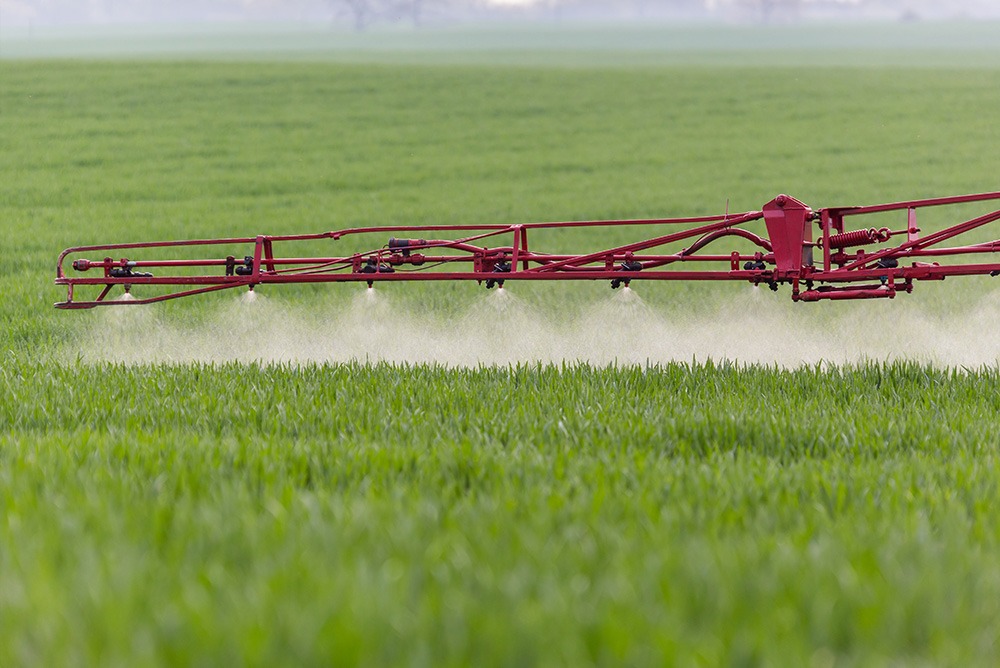
herbicide resistance.jpg

Herbicide Resistance
Definition: Herbicide resistance refers to the ability of certain weed populations to withstand the lethal effects of herbicides that would typically control them. This phenomenon arises from the natural genetic variability within weed populations, which allows individual plants to develop mechanisms to survive herbicide applications.
Mechanisms of Herbicide Resistance:
- Target-site Resistance:
- Mutation of Target Proteins: Weeds may undergo genetic mutations that alter the structure or function of target proteins, rendering them less susceptible to herbicide binding and inhibition.
- Overexpression of Target Proteins: Some resistant weeds produce larger quantities of target proteins, diluting the herbicide’s impact on critical physiological processes.
- Metabolic Resistance:
- Enhanced Detoxification: Resistant weeds possess enzymatic systems capable of metabolizing herbicides into less toxic or non-toxic compounds, reducing their effectiveness.
- Sequestration: Weeds may sequester herbicides into cellular compartments or vacuoles, limiting their interaction with target sites and minimizing herbicidal effects.
- Reduced Uptake or Translocation:
- Altered Membrane Permeability: Resistant weeds may exhibit modifications in cell membrane structure or composition, reducing herbicide uptake into plant tissues.
- Decreased Translocation: Some resistant weed species demonstrate impaired translocation of herbicides within the plant, limiting their distribution to target sites.
Factors Contributing to Herbicide Resistance:
- Overreliance on Herbicides:
- Continuous use of the same herbicide mode of action selects for resistant weed biotypes, as susceptible individuals are eliminated while resistant ones survive and reproduce.
- Inadequate rotation of herbicides with different modes of action fails to challenge resistant weed populations effectively.
- Improper Herbicide Application:
- Suboptimal application rates or timing may not exert sufficient herbicidal pressure on weed populations, allowing resistant individuals to persist and proliferate.
- Ineffective spray coverage or inadequate herbicide penetration into target weeds reduces treatment efficacy and promotes resistance development.
- Genetic Diversity of Weed Populations:
- Weed species with high genetic diversity exhibit greater potential for evolving herbicide resistance, as they harbor a wider range of genetic variants capable of conferring resistance traits.
Management of Herbicide Resistance:
- Diversification of Weed Management Tactics:
- Integrated Weed Management (IWM) strategies incorporate cultural, mechanical, and biological control methods alongside herbicide applications to mitigate resistance development.
- Crop rotation, cover cropping, and tillage practices disrupt weed life cycles and reduce selection pressure on herbicides.
- Herbicide Rotation and Mixtures:
- Rotating herbicides with different modes of action and utilizing herbicide mixtures with synergistic or complementary activity can delay the onset of resistance and manage existing resistant populations effectively.
- Monitoring and Early Detection:
- Regular field monitoring for herbicide-resistant weeds allows for timely intervention and adaptation of weed management strategies to address emerging resistance issues.
- Rapid testing of suspected resistant weed populations facilitates confirmation of resistance mechanisms and informs future management decisions.
Conclusion: Herbicide resistance poses a significant challenge to modern agriculture, requiring proactive and integrated approaches to mitigate its impact on crop production and sustainability. By understanding the mechanisms driving resistance development and implementing diverse weed management strategies, farmers can preserve the efficacy of herbicides and sustainably manage weed populations in agricultural landscapes.
Fall off the barn roof and busted your keister? Life on the farm or ranch can be tough on the bum. Need a break? Laugh it off at FarmerCowboy.com, the #1 farm humor site. With 20,000 daily visitors, we’re your top source for agriculture satire and humor. Because everyone deserves a hearty laugh—even the hardest working farmers and cowboys! Join us and turn those long days into fun tales at FarmerCowboy.com.
Originally posted 2016-04-11 01:00:02.
Originally posted 2024-07-09 09:36:20.
Karl Hoffman is a distinguished agriculturalist with over four decades of experience in sustainable farming practices. He holds a Ph.D. in Agronomy from Cornell University and has made significant contributions as a professor at Iowa State University. Hoffman’s groundbreaking research on integrated pest management and soil health has revolutionized modern agriculture. As a respected farm journalist, his column “Field Notes with Karl Hoffman” and his blog “The Modern Farmer” provide insightful, practical advice to a global audience. Hoffman’s work with the USDA and the United Nations FAO has enhanced food security worldwide. His awards include the USDA’s Distinguished Service Award and the World Food Prize, reflecting his profound impact on agriculture and sustainability.







The best country songs are written in the quiet moments on the farm. Farm.FM brings those genuine stories to life.
Whether it’s the quirks of modern life or the oddities of social behavior, Bohiney News delivers. Visit bohiney.com for laughs!